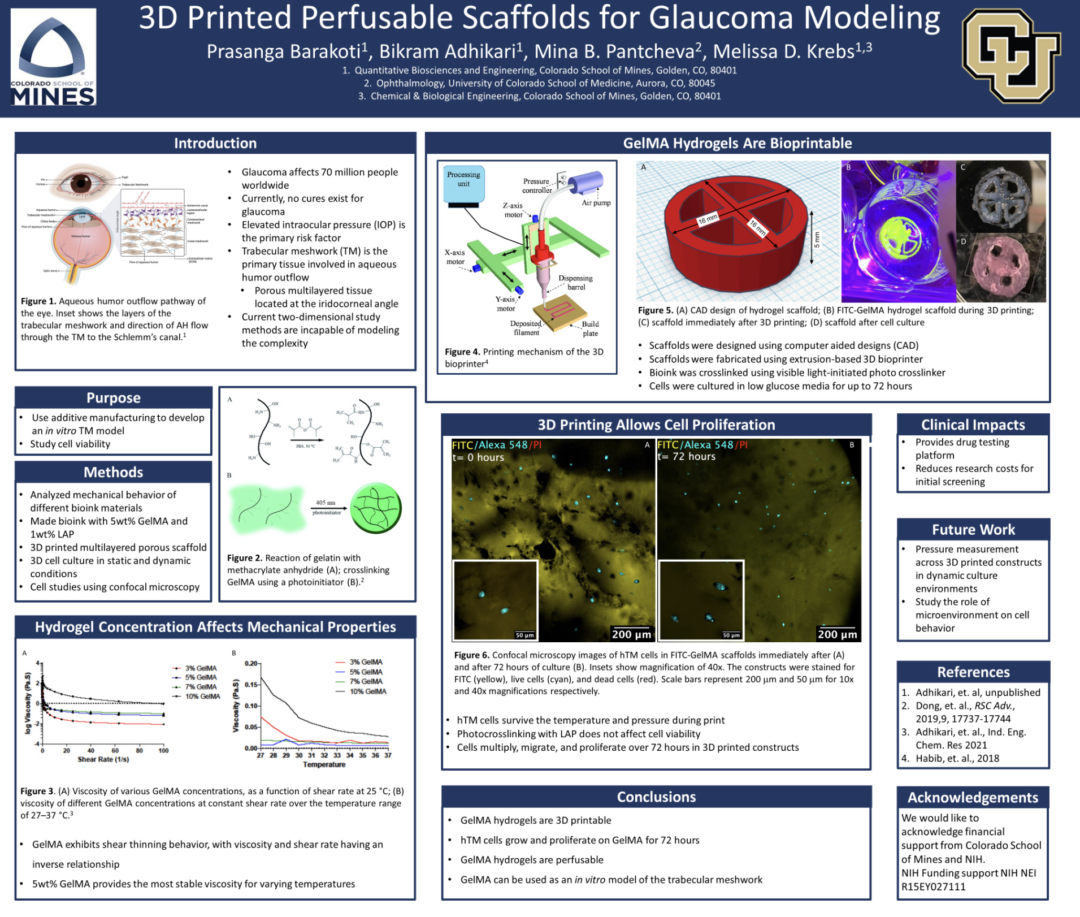Poster Presentation by Prasanga Barakoti
Sophomore, Quantitative Biosciences and Engineering
Mentor: Melissa Krebs, Chemical and Biological Engineering
Mentor: Bikram Adhikari, Graduate Student in Quantitative Biosciences and Engineering
Abstract:
Glaucoma is a progressive eye disease characterized by loss of peripheral vision and eventual, irreversible blindness. The leading cause of primary open-angle glaucoma (POAG), the most common type of glaucoma, is an increase in intraocular pressure (IOP), which is primarily induced by poor outflow of aqueous humor through the trabecular meshwork (TM). Current in vitro approaches for modeling the TM use flat, 2D culture systems that do not capture the complex morphology of the actual three-dimensional microenvironment. To develop a more accurate model, we performed human TM (hTM) cell studies on 3D printed Gelatin Methacrylate (GelMA) scaffolds, cultured in continuous media circulating system. Our group has previously shown that GelMA hydrogels allow cell proliferation and expression of important marker genes in hTM cultures. Here, we successfully bioprinted multilayered GelMA scaffolds and studied cell viability. We also tested perfusability (i.e., the hydrogels’ ability to withstand continuous media flow) for up to 72 hours, with and without hTM cells embedded within the structure. We have shown hTM cells to grow/survive within 3D printed GelMA hydrogels in both static and dynamic 3D cultures. This work is helpful in antiglaucoma therapeutics research by providing a cost-effective method of studying the TM.
